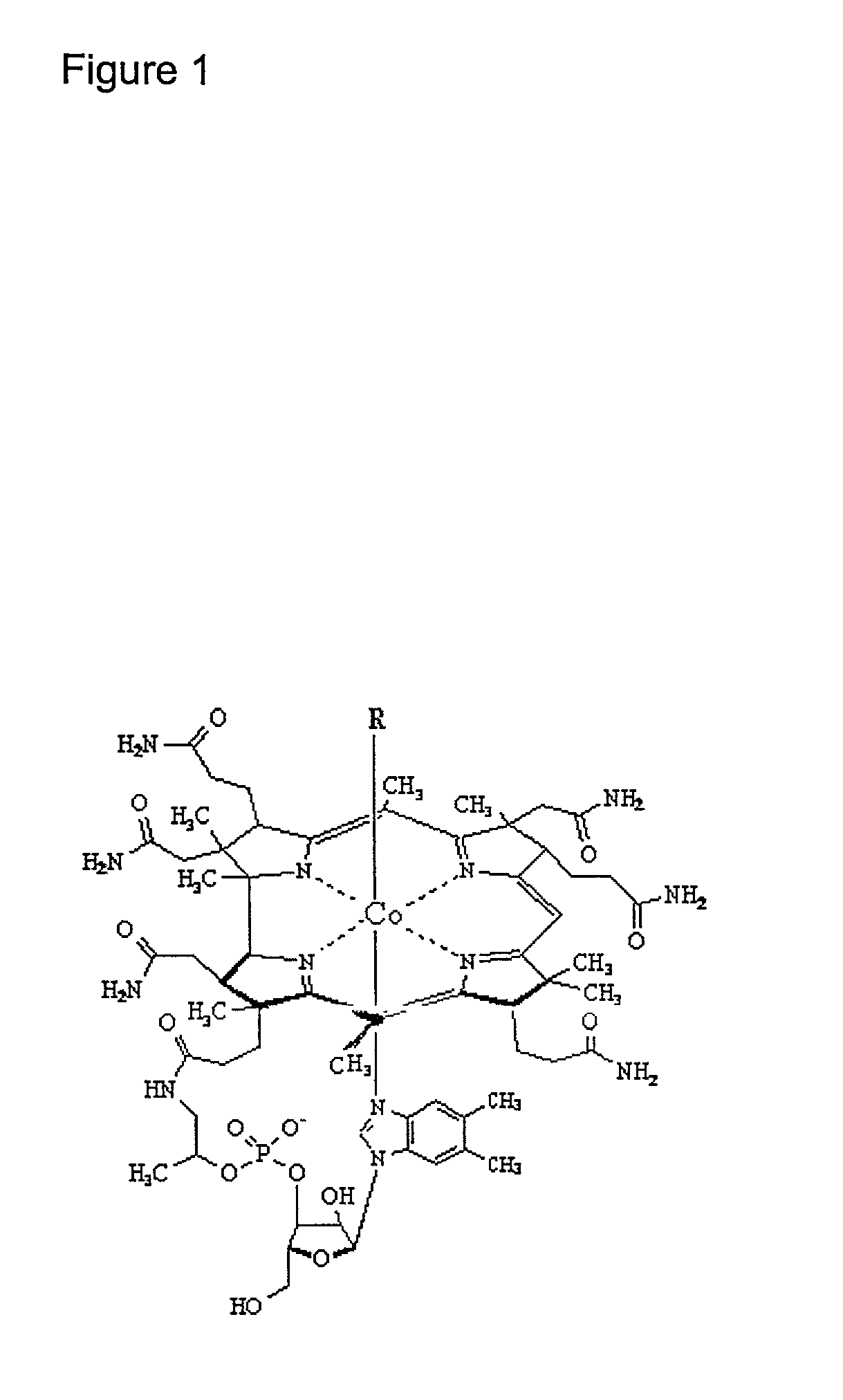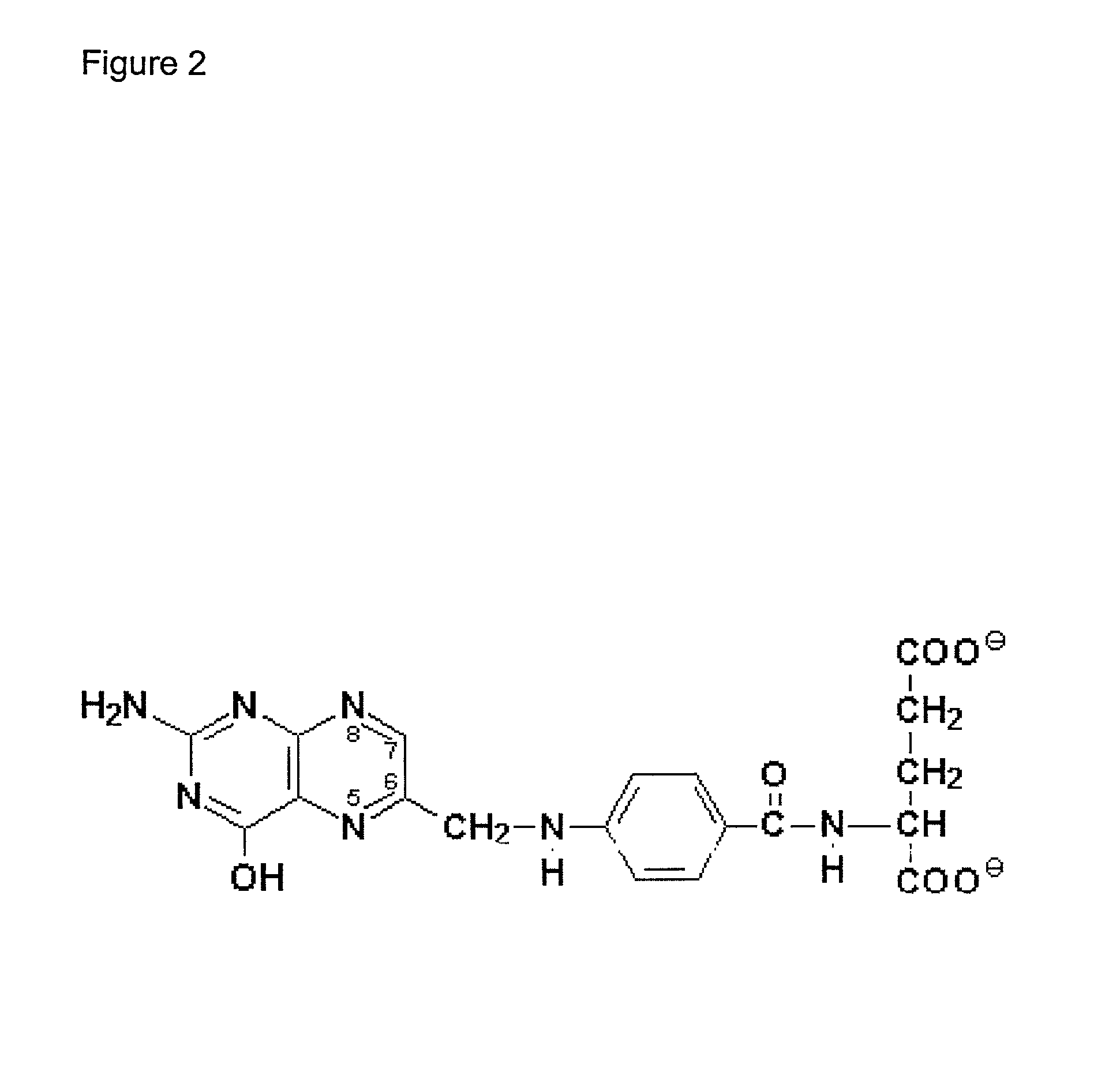B complex vitamin compositions that protect against cellular damage caused by ultraviolet light
a vitamin and complex technology, applied in the field of sunscreens and sunfilters, can solve the problems of reducing the protection effect of cells, and increasing the risk of neural tube defects in the developing fetus, so as to reduce the damage of cells, the effect of reducing the risk of cataracts
- Summary
- Abstract
- Description
- Claims
- Application Information
AI Technical Summary
Benefits of technology
Problems solved by technology
Method used
Image
Examples
Embodiment Construction
Folates
[0034]A number of folates, described below, are applicable to the invention. “Reduced folates,” means folates at the dihydro and tetrahydro level of oxidation, for example folinic acid or folinate. The folates referred to above include, but are not limited to, the following: folic acid, dihydrofolic acid, tetrahydrofolic acid, 5-formyltetrahydrofolic acid (folinic acid, leucovorin), 10-formyltetrahydrofolic acid, 5-10 methylenetetrahydrofolic acid, 5-10 methenyltetrahydrofolic acid and 5-methyltetrahydrofolic acid. Of these, folic acid and folinic acid and their salts are preferred.
[0035]Folic acid is formed from three separate chemical building blocks:[0036]A heterocyclic pteridine ring, 6-methylpterin[0037]p-aminobenzoic acid (pABA), and[0038]glutamic acid.
[0039]The 6-methylpterin moiety is linked through the amino group on pABA to form pteric acid, which is in turn linked through an amide to glutamate. Pteric acid that is linked to a single glutamate is known as pteroylmon...
PUM
| Property | Measurement | Unit |
|---|---|---|
| wavelengths | aaaaa | aaaaa |
| wavelengths | aaaaa | aaaaa |
| wavelengths | aaaaa | aaaaa |
Abstract
Description
Claims
Application Information
 Login to View More
Login to View More - R&D
- Intellectual Property
- Life Sciences
- Materials
- Tech Scout
- Unparalleled Data Quality
- Higher Quality Content
- 60% Fewer Hallucinations
Browse by: Latest US Patents, China's latest patents, Technical Efficacy Thesaurus, Application Domain, Technology Topic, Popular Technical Reports.
© 2025 PatSnap. All rights reserved.Legal|Privacy policy|Modern Slavery Act Transparency Statement|Sitemap|About US| Contact US: help@patsnap.com



